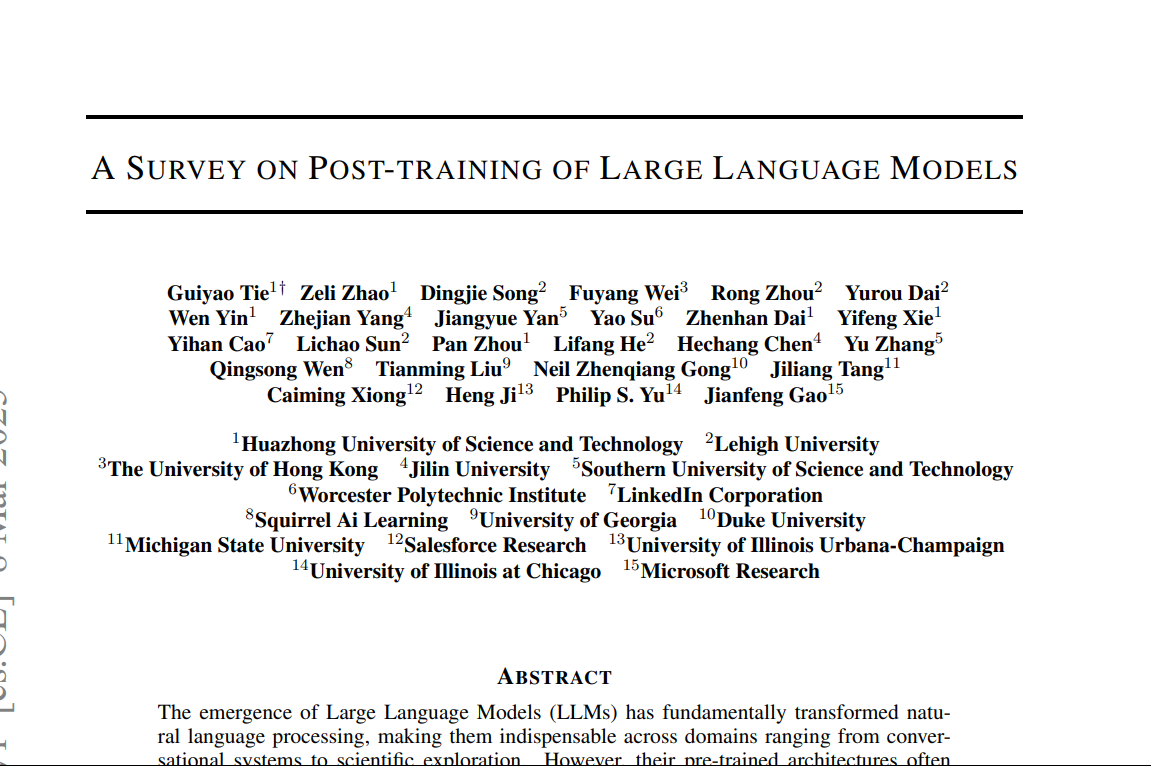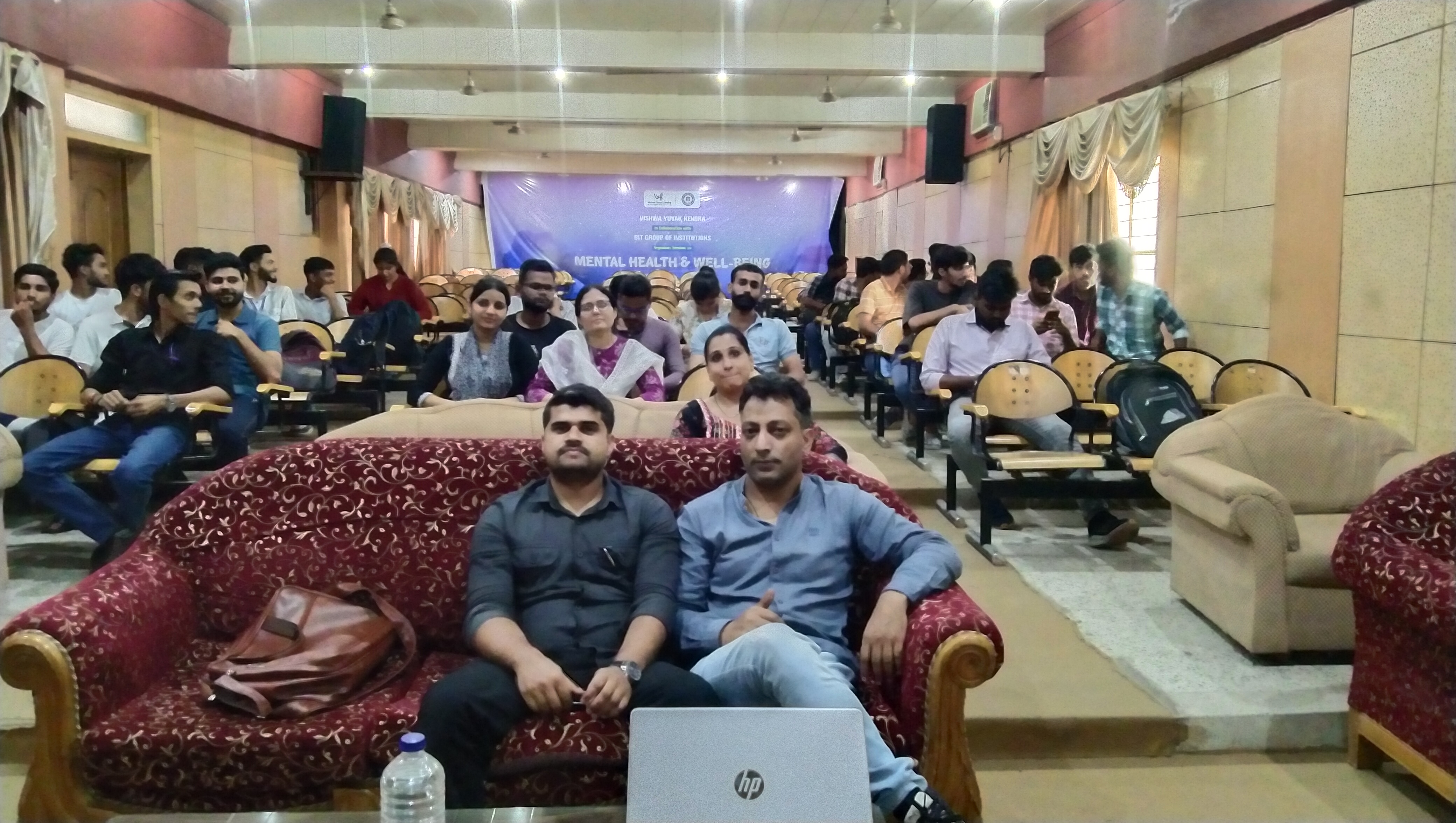Back
AI Engineer
AI Deep Explorer | f... • 8m
"A Survey on Post-Training of Large Language Models" This paper systematically categorizes post-training into five major paradigms: 1. Fine-Tuning 2. Alignment 3. Reasoning Enhancement 4. Efficiency Optimization 5. Integration & Adaptation 1️⃣ Fine-Tuning: Adapting AI for Specific Tasks Fine-tuning involves training an LLM on specialized datasets to improve accuracy in domain-specific tasks. 🔹 Types of Fine-Tuning ✓Supervised Fine-Tuning (SFT) – Uses labeled data to train AI for task-specific expertise (e.g., legal, finance, healthcare). ✓Instruction Tuning – Improves how LLMs follow complex prompts and generate structured responses. ✓Reinforcement Fine-Tuning – AI learns dynamically based on rewards or penalties from user interactions. 🔹 Example Use Cases ✅ Fine-tuning an AI chatbot for customer service in banking. 2️⃣ Alignment: Ensuring Ethical AI Behavior AI must align with human preferences to prevent misinformation, bias, or harmful content. 🔹 Key Alignment Methods ✓Reinforcement Learning with Human Feedback (RLHF) – AI learns from human-generated reward signals to improve responses. ✓Direct Preference Optimization (DPO) – AI is trained directly on user preferences rather than just reward models. ✓Reinforcement Learning with AI Feedback (RLAIF) – AI learns by evaluating itself, reducing reliance on human supervision. 🔹 Example Use Cases ✅ Preventing biased or toxic content generation in AI chatbots. 3️⃣ Reasoning Enhancement: Teaching AI to Think More Logically Pre-trained LLMs often struggle with multi-step reasoning, requiring specialized post-training. 🔹 Key Techniques for Reasoning Improvement ✓Chain-of-Thought (CoT) prompting – AI breaks problems into smaller logical steps for better reasoning. ✓Self-Consistency Training – AI verifies its own responses to improve accuracy. ✓Graph-Based Learning – AI models relationships between different concepts for better inferencing. 🔹 Example Use Cases ✅ Improving AI’s math problem-solving ability. 4️⃣ Efficiency Optimization: Making AI Faster & More Cost-Effective AI models are resource-intensive, requiring optimizations to reduce computational costs. 🔹 Key Efficiency Techniques ✓Parameter-Efficient Fine-Tuning (PEFT) – Updates only specific parts of a model instead of retraining everything. ✓LoRA (Low-Rank Adaptation) – Reduces memory usage while maintaining performance. 🔹 Example Use Cases ✅ Running AI models on mobile devices with limited resources. 5️⃣ Integration & Adaptation: Expanding AI’s Capabilities Beyond Text Modern AI systems need to process more than just text—they must understand images, audio, and real-time data. 🔹 Key Multi-Modal AI Techniques ✓Vision-Language Models (VLMs) – AI interprets both text and images simultaneously. ✓Cross-Modal Learning – AI integrates audio, video, and sensor data for broader applications. 🔹 Example Use Cases ✅ AI-powered medical diagnosis using text + image analysis.

More like this
Recommendations from Medial
AI Engineer
AI Deep Explorer | f... • 7m
LLM Post-Training: A Deep Dive into Reasoning LLMs This survey paper provides an in-depth examination of post-training methodologies in Large Language Models (LLMs) focusing on improving reasoning capabilities. While LLMs achieve strong performance
See MoreJainil Prajapati
Turning dreams into ... • 9m
India should focus on fine-tuning existing AI models and building applications rather than investing heavily in foundational models or AI chips, says Groq CEO Jonathan Ross. Is this the right strategy for India to lead in AI innovation? Thoughts?
Nikhil Raj Singh
Entrepreneur | Build... • 2m
Hiring AI/ML Engineer 🚀 Join us to shape the future of AI. Work hands-on with LLMs, transformers, and cutting-edge architectures. Drive breakthroughs in model training, fine-tuning, and deployment that directly influence product and research outcom
See MoreMohammed Zaid
building hatchup.ai • 5m
OpenAI researchers have discovered hidden features within AI models that correspond to misaligned "personas," revealing that fine-tuning models on incorrect information in one area can trigger broader unethical behaviors through what they call "emerg
See More
AI Engineer
AI Deep Explorer | f... • 7m
Give me 2 minutes, I will tell you How to Learn Reinforcement Learning for LLMs A humorous analogy for reinforcement learning uses cake as an example. Reinforcement learning, much like baking a cake, involves trial and error to achieve a desired ou
See MoreAccount Deleted
Hey I am on Medial • 4m
We help founders do this in 4 weeks ✅ MVP SaaS Platform ✅ AI Workflows & Logic ✅ iOS & Android App ✅ Full UI/UX Journey ✅ Admin Dashboard ✅ Payments, Users, Analytics All done by one expert team: 🔹 Designers 🔹 Developers 🔹 Strategists 🔹 AI Engi
See MoreDownload the medial app to read full posts, comements and news.





































